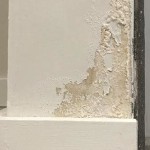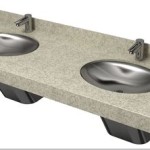How to Clean a Bathroom Faucet Aerator
A faucet aerator is a small, often overlooked component that plays a crucial role in the smooth operation of your bathroom faucet. Its primary function is to mix air with the water stream, resulting in a more consistent, even flow. While performing this essential duty, the aerator can become clogged with mineral deposits, debris, and other contaminants, leading to a reduced water pressure, a sputtering stream, or even a complete blockage. Fortunately, cleaning your bathroom faucet aerator is a simple and relatively quick task that can restore its optimal performance.
Understanding the Role of a Faucet Aerator
Faucet aerators are typically found at the end of the spout, often resembling a small, cylindrical cap. They are designed to improve the water flow and reduce splashing. As water flows through the aerator, it is mixed with air, creating a smooth, laminar flow. This process not only makes for a more pleasant experience when using the faucet but also conserves water by reducing the rate of flow.
However, over time, the tiny holes in the aerator can become blocked by mineral deposits, particularly in areas with hard water. These deposits, often composed of calcium and magnesium, restrict the water flow, leading to a weakened pressure and a sputtering, uneven stream. In severe cases, the aerator can become completely blocked, rendering the faucet unusable.
Identifying a Dirty Aerator
Before embarking on the cleaning process, it's essential to recognize the signs of a dirty or clogged aerator. Some common indicators include:
- Reduced water pressure
- A sputtering or uneven water stream
- Water spraying out in an inconsistent pattern
- A decrease in water flow, even when the faucet is fully open
- A visible build-up of mineral deposits around the aerator
If you notice any of these signs, it's likely that your faucet aerator needs a good cleaning.
Tools and Materials Needed
Cleaning a bathroom faucet aerator requires minimal tools and materials, making it a convenient and accessible task. Here's a list of what you'll need:
- A small, flat-blade screwdriver
- A small bowl or container
- White vinegar
- An old toothbrush
- A pair of pliers (optional)
- A towel or cloth
Steps for Cleaning a Bathroom Faucet Aerator
Once you have gathered the necessary tools and materials, follow these steps to clean your bathroom faucet aerator:
- Turn off the water supply. Locate the shut-off valve for your faucet and turn it to the closed position. This will prevent water from spraying out while you work on the aerator.
- Remove the aerator. Most faucet aerators are secured by a small, threaded collar. Gently unscrew this collar using a flat-blade screwdriver or pliers. If the aerator is stubborn, you can use a small wrench or pliers to help loosen it. Be careful not to damage the aerator or the faucet.
- Soak the aerator in vinegar. Fill a bowl or container with white vinegar and submerge the aerator in the vinegar. Allow it to soak for at least 30 minutes, or even overnight, to dissolve any mineral deposits that have accumulated.
- Clean the aerator. After soaking, remove the aerator from the vinegar and use an old toothbrush to scrub the aerator, paying close attention to the tiny holes. You can also use a small pin or needle to dislodge any stubborn debris.
- Rinse the aerator. Once the aerator is cleaned, rinse it thoroughly with water to remove any remaining vinegar or debris.
- Reinstall the aerator. Carefully screw the cleaned aerator back onto the faucet spout, ensuring it is securely attached. Tighten the collar using a screwdriver or pliers, but avoid overtightening as this could damage the aerator or the faucet.
- Turn the water supply back on. Once the aerator is reinstalled, turn the water supply back on and test the faucet to ensure the flow is smooth and consistent.
Maintenance Tips
To keep your bathroom faucet aerator clean and functioning optimally, follow these maintenance tips:
- Regularly check the aerator: Inspect the aerator for signs of mineral deposits or debris buildup. This will help you identify any potential issues early on and prevent them from becoming more serious.
- Clean the aerator periodically: Depending on the water quality in your area, you may need to clean the aerator every few months or even more frequently. A regular cleaning schedule will help to prevent excessive buildup and maintain optimal water flow.
- Consider using a water softener: If your area has hard water, installing a water softener can significantly reduce the amount of mineral deposits that accumulate in your faucet aerators and other plumbing fixtures. This can help to prolong the lifespan of your aerator and minimize the frequency of cleaning.
By following these simple steps and tips, you can ensure your bathroom faucet aerator remains clean and functional, providing you with a smooth, consistent water flow for years to come.

How To Remove The Faucet Aerator Ozone Microbubble Clean Systems For Bathroom Kitchen Manufacturer Strongco

How To Clean Faucet Aerator Simpson Plumbing Llc

How To Clean Your Faucet Aerator Zn Construction

How To Clean Debris Out Of A Bathroom Faucet Aerator Sbw 70 Sean Moenkhoff

How To Clean A Faucet Aerator Or Showerhead Plumb Works Academy

How To Clean Faucet Aerator Simpson Plumbing Llc

How To Clean A Faucet Aerator And Sink Sprayer Dummies

How To Clean Faucet Aerators And Flush Pipes After Construction Improve Water Quality

How To Clean Debris Out Of A Bathroom Faucet Aerator Sbw 70 Sean Moenkhoff

How To Unclog A Faucet Aerator For Dummies
Related Posts







